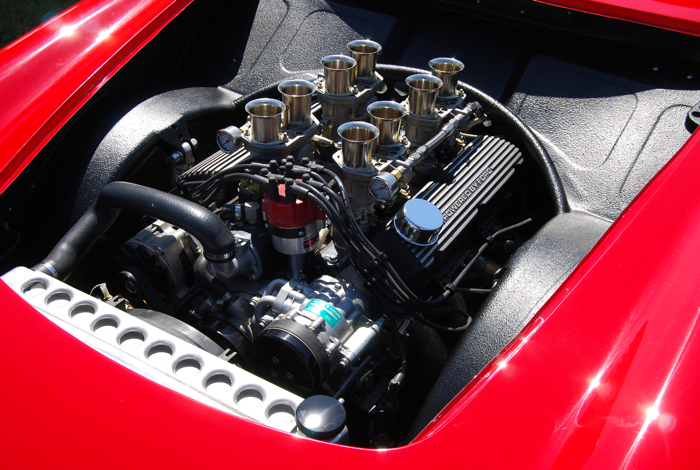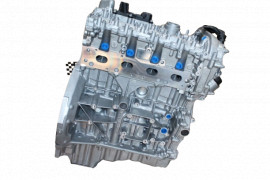Update Your Automobile with a New Opel Corsa Engine
Update Your Automobile with a New Opel Corsa Engine
Blog Article
Checking Out the Inner Functions of a Compact Lorry's Engine System
As vehicle drivers, we typically consider granted the elaborate procedures that occur within the confines of our vehicle's engine system. The compact yet complex equipment that pushes us forward is a wonder of engineering accuracy and control. From the controlled explosions in the burning chamber to the meticulous timing of gas shot, every component plays an important role in the smooth procedure of the engine. In this exploration of a small car's engine system, we will untangle the inner workings of this mechanical harmony, clarifying the mysteries that drive us onward on our day-to-day journeys.
Burning Refine Introduction
The burning procedure in a small vehicle's engine system is an essential system that successfully converts gas right into energy to power the automobile. This procedure happens within the burning chamber of the engine, where fuel and air mix, fire up, and generate regulated surges. The burning process consists of four main phases: intake, power, exhaust, and compression.
During the intake stage, the piston relocates downward, drawing in a blend of air and gas right into the burning chamber. This downward movement produces the power needed to drive the vehicle. This cyclic combustion procedure is basic to the operation of a compact automobile's engine system, guaranteeing efficient power conversion for propulsion.
Piston and Cylinder Communication

The piston's precise fit within the cylinder is vital for maintaining optimal compression and preventing power loss during combustion. Limited clearances in between the piston and cylinder wall surfaces ensure effective securing, permitting the piston to relocate efficiently without enabling gases to leak past. Appropriate lubrication is likewise essential to reduce rubbing and use between these elements, boosting long life and performance.
In addition, the layout and products used in manufacturing the piston and cylinder influence engine performance and toughness. Modern engines frequently employ light-weight yet durable products like aluminum alloys for pistons and cyndrical tube liners to minimize inertia and boost thermal efficiency. On the whole, the harmonious interaction between the piston and cylinder is basic to the engine's performance and overall efficiency.
Fuel Injection System Capability
Fuel injection systems in portable vehicle engines play a critical duty in exactly delivering fuel to the combustion chamber for reliable and controlled ignition. The gas shot system functions by injecting gas right into the burning chamber at the ideal minute throughout the engine's operation (opel corsa engine). This accurate timing Bonuses makes certain that the gas mixes evenly with the air for correct combustion, resulting in enhanced gas performance and reduced emissions
There are mainly two sorts of fuel injection systems utilized in small automobile engines: port gas shot (PFI) and straight gas injection (DFI) PFI systems infuse gas right into the intake port before the intake valve, while DFI systems inject fuel directly into the combustion chamber. Both systems have their advantages, with DFI supplying better fuel atomization and PFI supplying a much more cost-efficient service.
Understanding Engine Air Conditioning Mechanisms
Effective procedure of a portable lorry's engine depends greatly on the effectiveness of its cooling devices. Engine cooling is important to protect against getting too hot, which can cause severe damages and lowered efficiency. The cooling system in a compact vehicle typically contains a number of parts interacting to regulate the engine temperature level. One vital part is the radiator, which uses coolant to take in heat from the engine. As the warm coolant streams through the radiator, it launches warm into the air, cooling before going back to the engine. The water pump flows the coolant with the engine and radiator, guaranteeing a consistent circulation to regulate temperature level. Additionally, the thermostat helps regulate the visit here coolant flow to keep ideal engine temperature level. Some cars also have cooling fans that turn on when extra air conditioning is needed, such as throughout heavy web traffic or hot weather condition. Recognizing these engine cooling devices is vital for keeping the performance and durability of a portable car's engine system.

Exhaust System Components Explained
The ideal performance of a portable lorry's engine air conditioning mechanisms depends upon a complementary system known as the exhaust system, which makes up different necessary parts for making certain reliable emissions and engine performance. The exhaust system includes components such as the exhaust manifold, catalytic converter, muffler, and tailpipe. The exhaust manifold accumulates exhaust gases from the engine's courses and cyndrical tubes them to the catalytic converter. The catalytic converter after that transforms unsafe pollutants in the exhaust right into much less harmful emissions before releasing them through the muffler and tailpipe.
One vital component of the exhaust system is the oxygen sensor, which keeps track of the oxygen degrees in the exhaust gases to aid regulate fuel consumption and ensure optimal engine efficiency. opel corsa engine. In addition, the resonator might be present in some exhaust systems to reduce noise levels. In general, the exhaust system plays an essential duty in preserving engine efficiency, lowering unsafe discharges, and guaranteeing a quieter driving experience for compact automobile owners

Final Thought
In conclusion, the small automobile's engine system is a complex mix of components that collaborate to help with the burning procedure, convert gas into energy, and eliminate waste gases. Understanding the inner operations web link of the engine system, including the piston and cylinder interaction, gas injection system, engine air conditioning devices, and exhaust system components, is vital for keeping optimal performance and effectiveness of the lorry.
The combustion procedure in a portable vehicle's engine system is an important device that efficiently converts fuel into power to power the vehicle.Fuel injection systems in compact car engines play an important duty in specifically supplying fuel to the combustion chamber for effective and regulated ignition.There are mainly two types of fuel shot systems used in compact vehicle engines: port gas shot (PFI) and straight gas shot (DFI) Comprehending these engine air conditioning mechanisms is important for preserving the performance and longevity of a compact vehicle's engine system.
The optimal performance of a portable vehicle's engine cooling devices depends on a corresponding system recognized as the exhaust system, which makes up different vital elements for guaranteeing effective discharges and engine performance.
Report this page